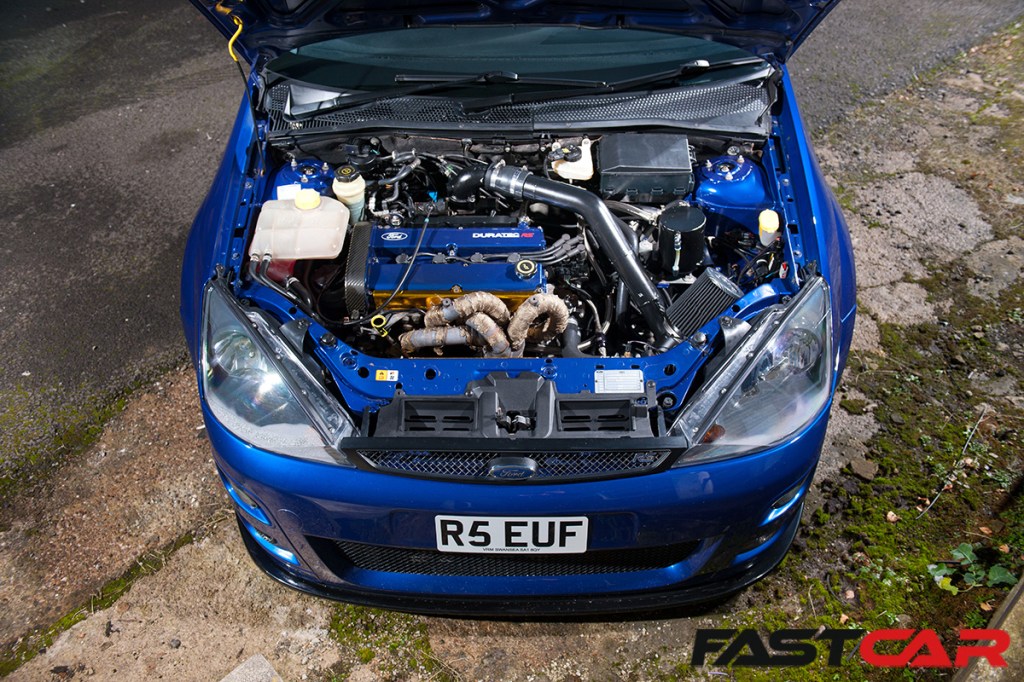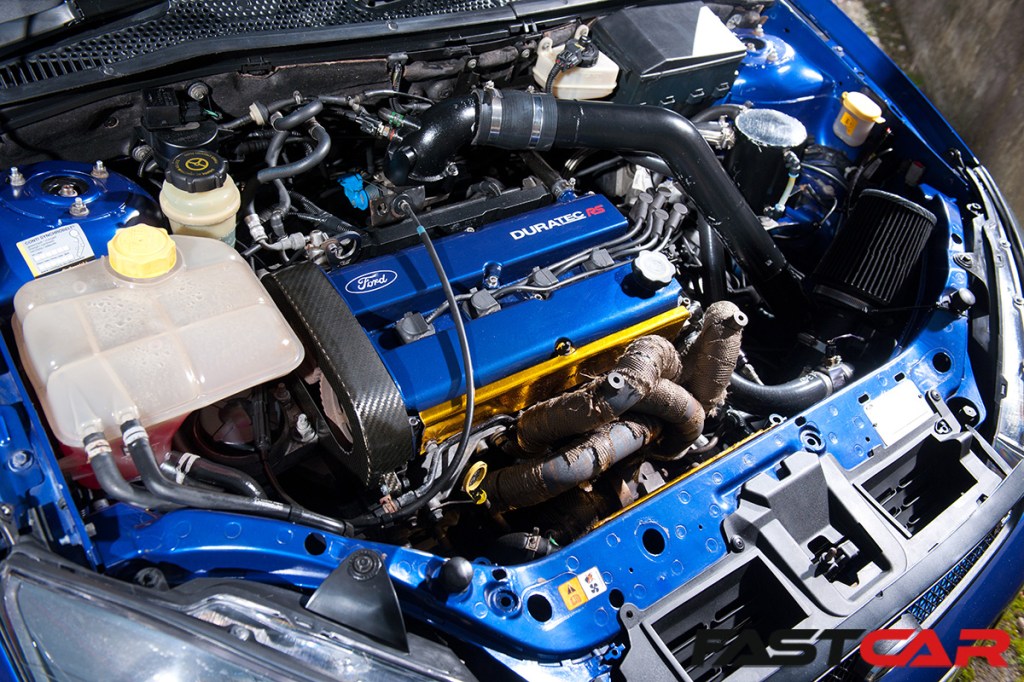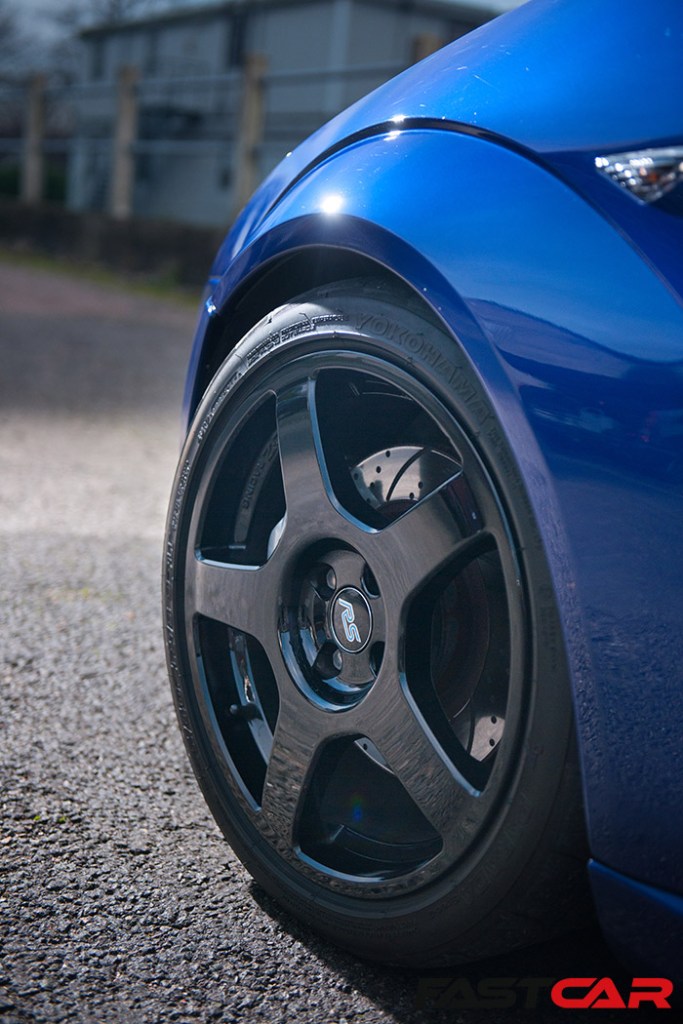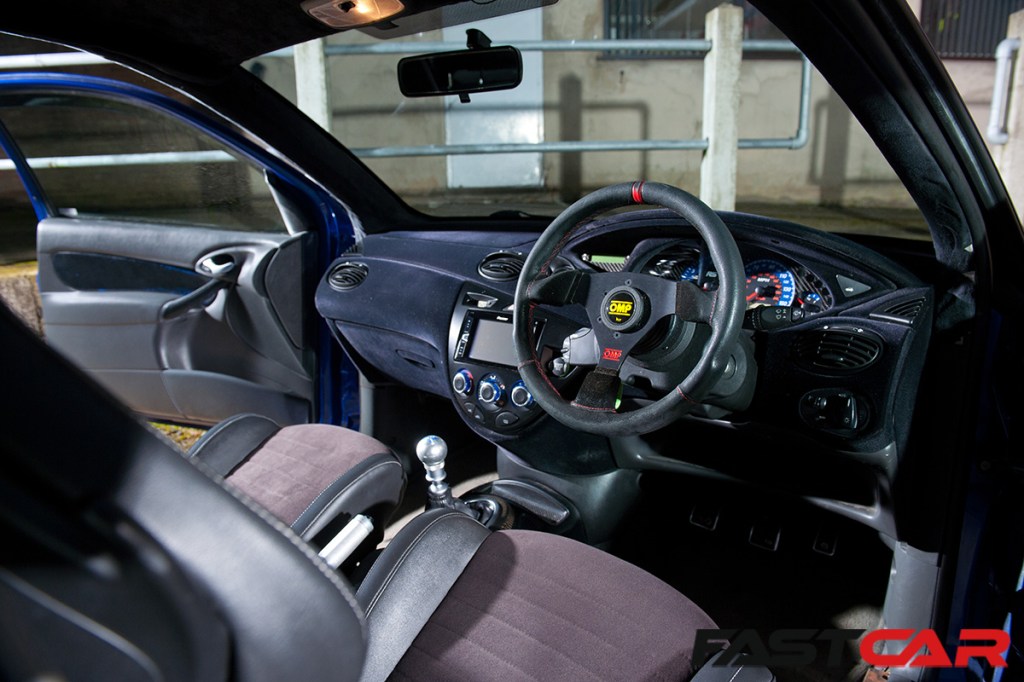Packing WRC-inspired styling and a turbocharged 2.0-litre powerplant from the factory, the Ford Focus RS Mk1 has never been shy, but today specialists have found ways to unlock its full potential through tuning. Here’s how…
Back at the turn of the century, delay after delay meant it felt like the promised and much-hyped return of the legendary Rallye Sport badge to the Blue Oval stable may never actually happen. Besides, following in the footsteps on the last great RS, the Escort Cosworth, was never going to be easy.
Ford Focus RS Mk1 History
When the Focus RS finally arrived in 2002 it more than delivered. More than a cynical marketing exercise to keep Ford’s World Rally partners happy, the Focus RS combined unbelievable rally-bred styling with performance hardware from the same names found on Colin McRae’s WRC machine, plus a new turbocharged version of the 2.0-litre Zetec engine that produced a very respectable 212bhp.
And the RS was more than the sum of its parts. Much more. It kickstarted an entire generation of fast Fords, including both the Mk2 and Mk3 versions – both of which have gone on to earn cult status. It quickly earned a reputation as a die-hard enthusiast’s fast Ford – no doubt helped by the controversial love-it-or-hate-it hardcore driving experience the media reported on – and it wasn’t long before tuners and enthusiasts found ways to further improve all areas of performance.
Tuners have been playing around with the RS for over twenty years now and have continually found new ways of making the Focus go, stop, handle, and look even better. Today, a Mk1 Focus RS can be whatever you want it to be: sump-scraping outrageous modified showstopper? No problem. Terrifying track terrier with over 600bhp? Yep, easy. Or a seriously sorted B-road hunter? Of course.
So, whether you want a sensible fast-road car, an extreme show piece or an out-and-out track car, the Mk1 Focus RS can do it. Read on to find out how.

Ford Focus RS Mk1 Engine Tuning
The Focus RS delivered 212bhp in standard trim but, like all fast Fords, is capable of so much more. The addition of a turbocharger to the Zetec engine meant significant performance gains were just a remap away. In fact, unless you’re after a factory-original concours machine, a Stage One remap should be at the top of your upgrade list. There are several to choose from, and it will sharpen the throttle response and deliver a crisper drive, not to mention unlocking an extra 50-60bhp. On top of that, a remap will be based on the latest software files that help to get rid of some of the niggly running issues that the RS suffered from in the early days.
Of course, adding some hardware to physically make the most of the revised software settings is the next step. How far you take things is up to you, but even with a totally stock appearance, any RS will benefit from a performance air filter, firmer actuator, uprated recirc valve and colder range spark plugs, delivering around 270bhp and 300lb.ft with no obviously visible modifications. You don’t need to spend a fortune on expensive induction kits either, as an uprated panel filter and the original airbox works just as well and looks stealthy.
Cooling upgrades
This power level is approaching the limit of the stock charge-cooler system, though. So, an obvious engine bay upgrade is needed to progress tuning further in the shape of an uprated charge-cooler system or swap to a front-mount intercooler. Pro Alloy’s charge-cooler pre-rad upgrade copes well with power increases up to 300bhp.
You may be able to run more than 300bhp with the uprated charge-cooler, but it does make mapping more of a challenge. At this level, many owners opt for a full front-mount intercooler setup instead. Pro Alloy’s front-mount doesn’t come cheap (£1,266) but will cope with much higher power levels and will improve the way the car drives, no matter what state of tune you are at.

Ford Focus RS Mk1 Exhaust Tuning
With the incoming air taken care of, the next area to focus your attention on is the exhaust, specifically the exhaust manifold. Rumour has it that Ford originally designed the RS to utilise a performance-orientated tubular manifold, but constant failures during testing caused them to pull the plug on the idea and revert to a tried-and-tested cast-iron item instead. Shame, but it does present an easy win for those looking to tune an RS: replacing the standard manifold with a four-branch version typically gains around 20bhp!
The rest of the exhaust system is more than up to the job, and aside from giving a nicer soundtrack, there’s no noticeable difference in terms of performance between the OE cat-back and an aftermarket one.
The standard catalytic converter itself doesn’t become a restriction until you’re knocking on the door of 300bhp. At which point, you’ll need a free-flowing sports cat, or a non-street legal de-cat pipe is even better for pure track cars. However, the standard downpipe isn’t quite as forgiving. It has an awkward and restrictive bend that slows exhaust flow. Therefore, binning this and fitting a sports cat is essential for further power gains. Ideally, you’d want to increase to a larger-diameter downpipe (a must for any subsequent turbo upgrade) and add a ceramic coating to help combat under-bonnet temperatures – heat soak is something the cramped engine of the Focus is unfortunately prone to.
Check out our guide to the best car exhausts.

Ford Focus RS Mk1 Turbo Tuning
The factory GT25 turbo provides plenty of punch and gives the RS its lairy character. But the physically small size of the unit means it starts to run out of puff at around 300bhp. Hybrid units based on the factory GT25 can eke a little more boost and therefore nudge you over that 300bhp barrier, but for cost-effectiveness most owners go straight for a GT28 turbo upgrade. With a GT28 bolted on you can continue to increase power to over 350bhp, provided you’ve already got everything else mentioned fitted. An even bigger GT30 will give you the potential for over 550bhp, and the almost endless turbo choice for custom installs gives you the tools needed to chase as high a power figure as you want – providing you have the bank balance to fund it!
Engine Management and Internals
To release more power requires taking the head off for a spot of porting and gas flowing. A well-specced cylinder head is capable of over 500bhp, but at this point, the GT28 and related pipework is too restrictive to make use of it. Instead, a slightly modified inlet cam and bigger injectors will give around 400bhp with a suitable custom map.
Talking of which, the original EEC-V engine management can be mapped and will give good results (you’ll want to retain the stock airbox and add an uprated recirc valve to avoid stuttering and issues with the stock MAF sensor), but if you’re chasing more than 400bhp a swap to a standalone engine management system would be wise.
The Focus RS engine can produce over 600bhp, but this requires a custom build that needs discussing in detail based on your exact setup. You can expect to splash out on beefed-up internals, more head tweaks, bigger cams and yet another turbo to achieve it. But if you want it, it can be done.
Ford Focus RS Mk1 Transmission Upgrades
The RS’s MTX-75 gearbox and Quaife ATB front differential are built to last. Both are tough, durable and can handle significant power increases and even aggressive driving styles without too much fuss. The stock clutch isn’t bad either and you won’t need to upgrade until you’re approaching 400bhp – a heavy-duty organic replacement is all most users will ever need, but paddle clutches are available for track and race cars.

Mk1 Focus RS Suspension Tuning
The Mk1 Focus was famed for its playful handling, and the RS is the cream of the crop. Like all Focus RS models, the Mk1 handles well in factory trim and unless you’re an avid track fan there really is little point in replacing the original Sachs dampers that have been fine-tuned to perfectly suit the RS’s chassis. However, like all standard cars, the ride height is a bit much. Adding a set of lowering springs from the likes of Eibach or H&R is a quick and easy way to improve the stance, centre of gravity, and roadholding of the RS without losing any of its famed handling prowess. It’s worth adding camber adjusters to reset the camber levels at the same time.
The RS has a bit of a habit of chewing up rear trailing arm bushes at an alarming rate, so adding polybushes here is a wise investment. If you’ve got the cash, swap out all the stock rubber bushes for maximum gain.
You’ll hear a lot of Ford fans talking about coilovers, but the truth is unless you spend a lot of time on track, they aren’t really needed on the RS. Of course, there are several options to choose from for serious track cars, but our top tip is don’t be tempted by cheap alternatives – just because they are adjustable doesn’t automatically make them better suited to the driving dynamics of the car.
Relevant Content: Best Car Suspension Brands in 2023.

Ford Focus RS Mk1 Brake Tuning
Calling on Ford’s WRC parts suppliers, the RS boasts massive 320mm discs and Brembo four-pot calipers. Most owners will only need a set of fast-road spec pads. Add some braided brake lines and performance discs and you’ve got a decent setup that’s more than up to the challenges of fast road and occasional track use.
For track fans, or just those who want the pose factor at shows, big brake kits are available and start at around 330mm but for maximum impact, you can squeeze 360mm discs under the factory 18in alloys. Upsize to 19s and you could increase these to gigantic 380mm discs with suitable calipers if you really wanted to!
Looking for the best brake upgrades? We’ve got you covered with our guide on the best brake pads and rotors.
Wheels and Tyre Upgrades
The RS just looks oh-so right sitting on its chunky five-spoke alloys, and many owners are understandably reluctant to change them. But for the mavericks out there, the vital stats you’ll want to be aware of when selecting new rims are the 8×18”, 4×108 PCD and ET42 offset of the stock rims. Sticking as close to these as you can when choosing aftermarket options will yield the best results, which is why Compomotive MO6 and Team Dynamics Pro Race 1.2s are among the most popular upgrade choices – both are available in 8×18 with an ET40 offset.
Need some more inspiration? Visit our guide on the best aftermarket wheels in 2023.

Interior Modifications For The Focus RS Mk1
The two-tone interior is a love-it-or-hate-it affair. It proved very popular at launch, but compared to the RS’s anabolic aesthetics, the interior does look very dated. One of the best upgrades we’ve seen is adding the Recaro Sportster CS bucket seats from the Mk2 and Mk3 Focus RS, giving the Mk1 an instant interior facelift and providing more support than the Sparco-badged (but not really Sparco!) original seats.
Another common and well-placed interior upgrade is the addition of a water temperature gauge – something Ford omitted from the factory. Many owners also add an oil pressure gauge too.
Ford Focus RS Mk1 Styling
Don’t touch it! That’s the message from the masses here. And it’s hard to argue, as the Mk1 RS is one of the most iconic fast Fords of all time. However, if you could leave things alone you wouldn’t be reading this modifying guide! For those looking for a subtle enhancement, adding some smoked ST170 headlights and understated add-ons such as splitters, sideskirt extensions, or even a splash of well-placed carbon fibre will elevate your RS above factory original examples. But it’s your car and you’re free to do as you please – if you want a flip-painted finish, ’90s-style Lambo doors, or a motorsport-inspired bodykit, you go for it!

Photos: Ade Brannan.








